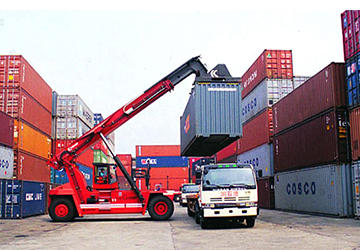Introduction to Heavy Machinery Loading and Unloading
Introduction to Machinery Loading and Unloading
Machinery loading and unloading is a critical component of the logistics and supply chain management in various industries. It involves the use of specialized equipment and techniques to safely move heavy machinery. This process not only requires precision and planning but also adherence to safety standards to prevent damage to the machinery and ensure the safety of the personnel involved.
As one of our core services we are able to assist with your installation and machinery moving needs across Dhaka Division and often Nationwide. In fact to date we have conducted installation projects in over districts in countries.
We are particularly experienced in projects requiring dismantling in one One place to another place and then transport and installation in another.
In the past we have managed hundreds of projects like this and our team of engineers and project managers are always keen to share their knowledge and experience with our clients.
Our Services:
Machinery loading unloadingGazipur, Machinery Transferring in Gazipur, Factory and industry movers, Machinery movers in Gazipur, Equipment movers and handling, machineries loading unloading, container loading unloading, forklift rental, crane rental

Importance of Efficient Machinery Loading and Unloading
- Safety: The primary importance of efficient machinery loading and unloading lies in ensuring the safety of workers. Heavy machinery poses significant risks, and proper procedures minimize the risk of accidents.
- Cost Efficiency: Proper loading and unloading techniques can prevent damage to expensive machinery, avoiding costly repairs or replacements.
- Time Management: Efficient processes ensure that machinery is moved quickly and ready for use or transport, keeping projects on schedule.
Challenges in Machinery Loading and Unloading
- Weight and Size of Machinery: The sheer size and weight of industrial machinery make loading and unloading a challenging task, requiring specialized equipment and techniques.
- Safety Risks: There is a high risk of accidents and injuries due to the heavy and unwieldy nature of the machinery.
- Environmental Conditions: Weather and terrain can impact the loading and unloading process, introducing additional challenges that must be managed.
- Regulatory Compliance: Compliance with local and international regulations governing the transportation and handling of heavy machinery is crucial.
Strategies for Safe and Efficient Machinery Loading and Unloading
- Use of Specialized Equipment: Cranes, forklifts, and other specialized lifting equipment are essential for handling heavy machinery. The choice of equipment depends on the machinery’s weight, size, and the conditions of the loading/unloading site.
- Skilled Personnel: Trained and experienced operators are crucial for safe loading and unloading operations. Continuous training and adherence to safety protocols are essential.
- Planning and Coordination: Detailed planning, including risk assessments and method statements, ensures that all aspects of the loading and unloading process are considered and managed efficiently.
- Safety Measures: Implementing comprehensive safety measures, including the use of personal protective equipment (PPE), securing loads properly, and ensuring clear communication among team members, is vital.
Technological Advancements and Their Impact
The integration of technology into machinery loading and unloading processes has significantly improved efficiency and safety. Innovations such as automated guided vehicles (AGVs), robotics, and advanced lifting equipment have streamlined operations. Additionally, software solutions for planning and managing logistics operations have enhanced coordination and tracking.
Future Trends in Machinery Loading and Unloading
- Automation: The trend towards automation is expected to continue, with more sophisticated robotic systems and AGVs taking on a larger role in loading and unloading operations.
- Sustainability: There is a growing focus on environmentally sustainable practices, including the use of electric and hybrid vehicles for transportation and lifting.
- Enhanced Safety Protocols: Advances in technology and equipment design are expected to further enhance safety measures, reducing the risk of accidents and injuries.
- Regulatory Changes: As technology evolves, regulatory frameworks will also adapt, potentially introducing new standards and practices for machinery loading and unloading.
Here is a quick summary of the services we provides during a relocation or removal project
- Match marking of mechanical, electrical and piping parts
- Decommissioning of existing machinery including removal of services and disconnection of electrical and mechanical connections
- Removal of walkways, access platforms and other infrastructure
- Removal of floor fixings
- Dismantling of machinery including documenting the process and marking components if re-assembly is required at a later stage
- Packing machinery depending on transport requirements
- Heavy lifting to remove machinery utilizing our fleet of cranes, hydraulic gantries, forklifts, versa lifts and twin lifts etc
- Removal and loading onto transportation as necessary
- Transportation to its new location both nationally and internationally including managing any road permits etc
Machinery loading and unloading is a complex operation that requires meticulous planning, specialized equipment, and skilled personnel to ensure safety and efficiency. As industries continue to evolve, the integration of technology and adherence to best practices in safety and efficiency will be crucial. Looking ahead, the future of machinery loading and unloading lies in the adoption of automation, sustainable practices, and continuous improvement in safety protocols, ensuring that the movement of heavy machinery is conducted as efficiently and safely as possible.


Comments